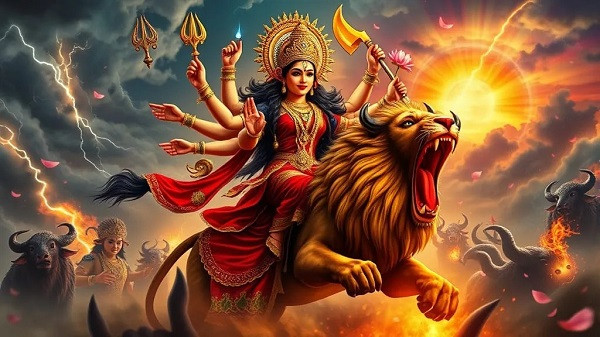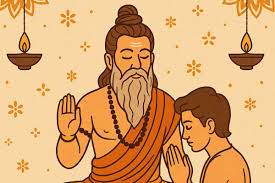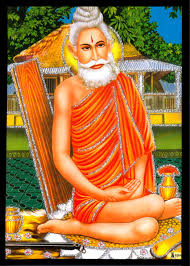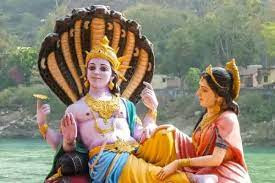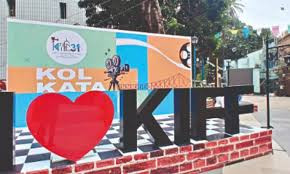“Why 56 Dishes? The Sacred Meaning of Jagannath’s Daily Chappan Bhog During Rath Yatra 2025”
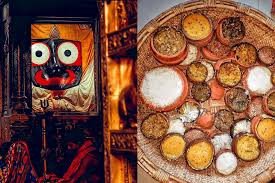
IIE DIGITAL DESK : The Rath Yatra 2025 unfolds in Puri on June 27, one of its most revered rituals, the Chappan Bhog, gains special focus. Every day, Lord Jagannath—along with his siblings Balabhadra and Subhadra—is offered a lavish spread of 56 different dishes throughout the festival. This ritual carries deep mythological roots, centuries-old temple traditions, and a profound expression of inclusion and divine grace.
At the heart of the Chappan Bhog tradition lies a touching myth: Lord Jagannath is believed to be a form of Krishna, who, in childhood, ate eight meals daily prepared by Yashoda. However, when he lifted Govardhan Hill, protecting villagers from a drought-inducing monsoon for seven days, these meals went uneaten. To honour his love and sacrifice, the temple tradition began offering 56 meals (chappan = 56) each day—a symbolic replication of those missed offerings.
This daily feast is a hallmark of Puri’s temple kitchen, one of the world’s largest, capable of cooking for 100,000 people daily, using only wood-fire and earthen pots across 240 hearths and over 600 cooks. The food is cooked without stainless steel or electric grinders, honoring the legacy of ancient traditions and fire-based homa rituals.
Imported ingredients like garlic, onions, potatoes, and tomatoes are strictly avoided, preserving the purity of the ritual. Devotees share in the Mahaprasad—the consecrated food—at the temple’s Ananda Bazaar, emphasizing spiritual equality and devotional unity.
During the nine-day Rath Yatra festival, this ritual is upheld with sacred discipline:
-
Gundicha Marjana (June 26): The temple is ritually cleansed before the deities’ journey.
-
Rath Yatra Day (June 27): 56 dishes are ceremoniously offered before the deities board the massive chariots.
-
Seven-Day Stay at Gundicha Temple: Bhog is distributed daily till the Bahuda Yatra, preserving devotional continuity throughout their time away from the main shrine.
-
Paying Homage to Krishna’s Sacrifice: Reenacting Krishna’s Govardhan fasting, the practice channels empathy and homage for his deeds.
-
Spiritual Equality: By offering and distributing sacred meals to all—including Brahmins, Sanyasis, and lay devotees—the ritual dismantles caste barriers, upholding Jagannath’s identity as Bhoga Khaiya, “The All-Eater.”
-
Symbol of Divine Providence: The temple’s consistent need-based preparation of 56 dishes each day is considered miraculous and reflective of Mahalakshmi’s blessings over the kitchen
Spanning hearty rice dishes, lentil curries, local vegetables, sweets like khaja and ladoo, seasonal pithas, milk desserts, and light snacks, the 56 bhog items reflect the cultural and nutritional richness of Odisha. Each dish is a tribute to devotion, seasonal agriculture, and culinary heritage.
-
ISKCON & Other Rath Celebrations: While Puri alone offers 56 items daily, ISKCON and other Rath Yatra sites mark the occasion with potent rituals during the Ulta Rath. Puri’s tradition stands out for its dedication and scale.
-
World-Facing Devotion: Rath Yatra celebrations stretch beyond India—pandals in Kolkata, Bhubaneswar, Singapore, Russia, and more—drawing international devotees who partake in bhog and cultural rituals
-
Devotional Unity: Chappan Bhog embodies a devotional philosophy where abundance serves humility, devotion, and shared spiritual experience.
-
Cultural Preservation: Preparing 56 dishes without modern aids preserves ancient cooking methods, taste profiles, and culinary identities unique to Odisha.
-
Symbol of Abundance and Faith: The vast yet disciplined feast reinforces collective faith—no one leaves empty-handed, mirroring divine generosity.
Amid the roar of chariots and Krishna calls of “Hara Hara Bole,” the Chappan Bhog stands as a ritual of subtle strength. Having fed gods with 56 sacred dishes daily for centuries, it encapsulates devotion, compassion, culinary artistry, and cultural unity. As the chariots roll through Puri’s grand Bada Danda, pilgrims witness not just a festival but a living legacy—the eternal promise that love, humility, and divine nourishment transcend every boundary.
You might also like!


